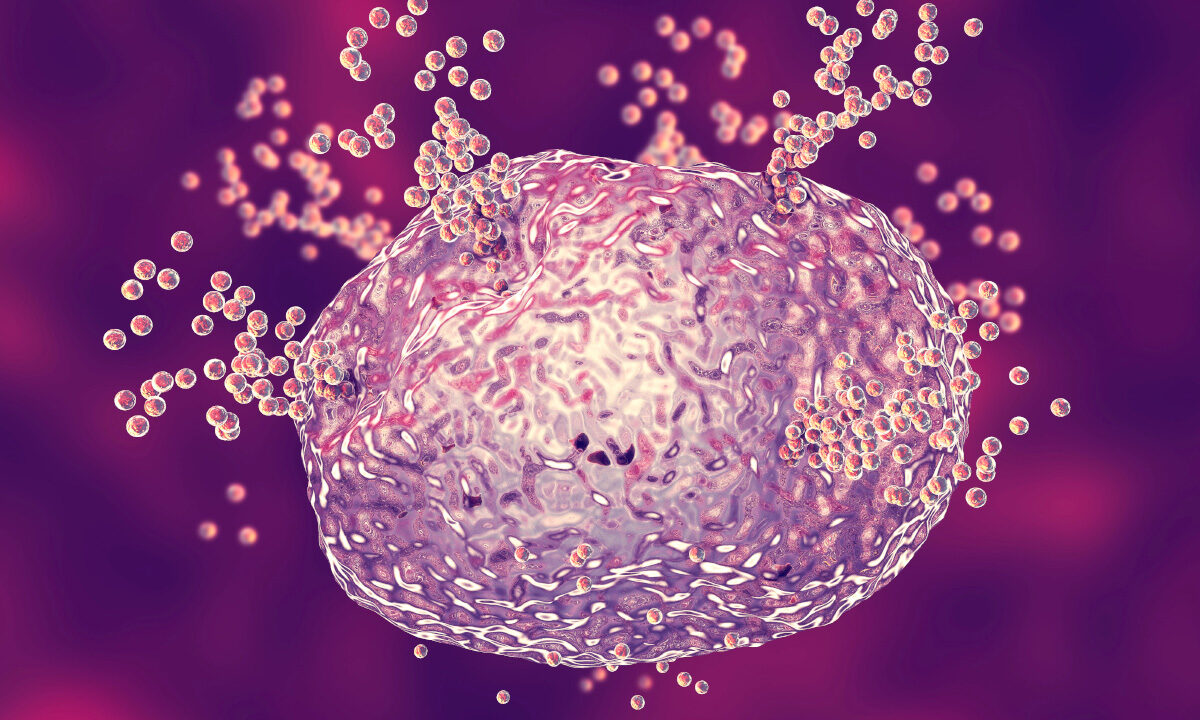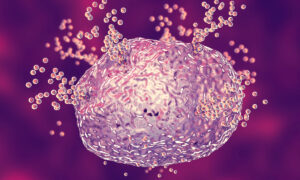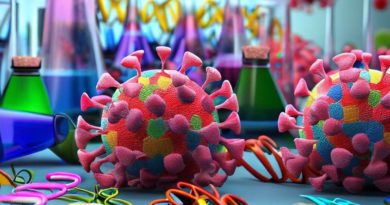Everything ‘Could Be an Enemy’: Mast Cell Diseases Reported After COVID-9 Vaccination

In this series, we evaluate some of the lesser-known yet common adverse events that are appearing in the research literature as well as in doctors’ clinics and, more importantly, how to deal with them and reduce the risks.
Previously: Underdiagnosed cases of post-vaccine small fiber neuropathy are concerning, but some doctors are more concerned about the slew of novel movement disorders they’re seeing in their patients.
More than 22 months after taking her first dose of the Pfizer COVID-19 vaccine, musician and singer Emaline Delapaix was diagnosed with various systemic diseases.
She has seen at least 16 medical specialists, all convinced that the vaccine was involved, especially her longtime primary care physician, who knew that Delapaix was healthy prior to getting the shot.
On June 17, 2021, she took her first dose with her then-fiancé. She felt fatigued and heavy but waved it off as a typical vaccine reaction. However, within hours, she developed excruciating pain in her arms. The pain soon spread to her back and legs.
In the ensuing months, Delapaix said she was so fixated on the pain that she missed another lurking problem.
After meals, she sometimes developed fatigue so severe that she felt sedated. Her face and joints swelled, burning pain flared throughout her body, and her heart rate increased. She needed to take three doses of antihistamines to control her symptoms.
What Delapaix developed is called mast cell activation syndrome. Her mast cells, sometimes called the “sentinels” of the immune system, have become overly sensitive, and exposure to inflammatory food or environmental chemicals now triggers an inflammatory reaction in her body. Her doctors explained that the vaccine has made her body confused and reactive.
It’s reacting as if “everything that comes in could be an enemy,” she told The Epoch Times. She has since had to change her diet, cutting out foods that could trigger the reaction, such as gluten, chocolate, citrus, avocados, and processed food.
The disease has become the new focus of Delapaix’s life.
“[It] is dangerous—you can have a stroke or a heart attack—so I have to take it seriously,” she said.
Delapaix was tested in a vaccine-injury clinic in Marburg, Germany, and the test showed that she had spike protein but no nucleocapsid protein in her body, both of which are COVID-19 viral proteins. The COVID-19 vaccine causes the body to produce only spike protein. If she had been previously infected, both nucleocapsid and spike proteins would have been present.
More Common Than It Seems
Although it’s largely unrecognized, mast cell activation syndrome is quite common and may be the underlying cause of many conditions, Dr. Lawrence Afrin, a hematologist specializing in mast cell activation syndrome, said in an interview with Dr. Mobeen Syed.
The cause of this disease is unknown. A study estimated that 17 percent of the population of Germany (where Delapaix lives) is predisposed to developing the disease.
Studies have linked the inflammation in acute COVID-19 and many long-COVID symptoms with mast cell activation.
Mast cell activation syndrome describes a condition in which mast cells, a type of immune cell, become overly sensitive such that any foreign substance may trigger them to release compounds. Histamine is the most well-known compound released, but not all mast cell activation syndrome cases involve histamine reactions.
There are two aspects to mast cell activation:
- Spontaneous activation of mast cells and release of histamine and other inflammatory compounds causing inflammation in many tissues and organs
- Histamine intolerance, which can trigger allergic symptoms
Histamine intolerance occurs in people who can’t process histamine or whose histamine levels are so high that the body can no longer keep them under control.
Under normal circumstances, histamine is necessary. It’s released to control infections and promotes stomach acid release for digestion. Some healthy foods, such as avocados and cashews, contain histamine.
However, when the histamine level passes a certain threshold, it can cause inflammation and allergic symptoms: Blood vessels widen, airways constrict, mucus production increases, tissues swell, and the skin becomes flushed.
The threshold level of histamine is often compared to a cup: Everyone produces histamine from day to day, but as long as the baseline histamine is contained within the cup, the person won’t show symptoms. But if histamine levels exceed the parameters of the cup, the contents will start to overflow, and that’s when patients will experience a flare-up. A severe flare-up can be life-threatening.
Histamine and COVID-19
Histamine is believed to be a major contributor to severe COVID-19.
In long COVID, mast cells can be triggered by the virus. Histamine released into the brain can cause stress, neuroinflammation, and impaired brain function.
It isn’t understood how these mast cells become activated both in COVID-19 and in long COVID, but the mechanism may be driven by the spike protein, which is the inflammatory protein on SARS-CoV-2 virus surfaces, central to COVID-19.
Studies have shown that the virus infects mast cells by binding its spike protein to mast cell receptors. Animal studies have also demonstrated that isolated spike protein can activate mast cells.
Board-certified internist Dr. Keith Berkowitz told The Epoch Times that about half of his patients who developed reactions post vaccination have some form of mast cell involvement, as indicated by chronically elevated levels of circulating histamine.
Family doctor Jeffrey Nordella has likewise diagnosed patients with mast cell activation syndrome after their vaccination.
Many Triggers, Many Symptoms
Typical symptoms of mast cell activation vary from skin problems and breathing difficulties to digestive issues, according to a study published in The American Journal of the Medical Sciences.
However, mast cell activation can also trigger brain fog, neuropathy, hair loss, and bleeding abnormalities, depending on what and where various compounds are released.
Mast cell activation syndrome is often associated with systemic dysregulation, such as fibromyalgia, and dysautonomic conditions, such as postural orthostatic tachycardia syndrome (POTS). Patients may be diagnosed with either of these conditions before being diagnosed with mast cell activation. Both fibromyalgia and POTS have been reported among long-COVID patients, and POTS has been seen in vaccinated patients.
Delapaix was also diagnosed with POTS and neuropathy.
Berkowitz said many of his post-vaccine mast cell activation patients develop myriad symptoms, including brain fog, palpitations, chest pain, and even exercise intolerance.
Triggers for mast cell activation syndrome include certain foods, stress, and common allergy triggers, such as pollen and dust mites, chemicals, and medications.
Some people are triggered by foods high in histamine, such as aged meats and dairy. Others may be triggered by inflammatory foods, such as gluten and sugar.
Certain medications and medical interventions, such as vaccines, can cause flare-ups. Environmental chemicals, such as fragrances, can also do so. Both physical and emotional stress, in particular, easily aggravates mast cells.
Patients may develop allergic reactions to certain things despite having no prior history of allergy. Some experience a worsening of allergic symptoms. Berkowitz has seen both phenomena among vaccinated patients.
What to Look For
Afrin said that it’s essential for those with a complex history of systemic inflammation to be vigilant, noting that if the patient has been diagnosed with conditions ending with “-itis,” this may indicate mast cell involvement.
Berkowitz explained that mast cell activation syndrome is hard to diagnose, as one of the criteria is that the patient must be found to have tryptase, a chemical primarily released by mast cells during activation. But patients’ mast cell activation flare-ups don’t necessarily coincide with when the test is taken. Sometimes by the time tests are taken, the tryptase has stopped circulating and is therefore not detected.
According to The American Journal of the Medical Sciences study, other useful diagnostic markers for mast cell activation syndrome include histamine, prostaglandin D2, heparin, and chromogranin A.
Mast cells produce a thousand different compounds, depending on the mediator at play, Afrin said.
Nordella noted that if a patient displaying severe allergic symptoms experiences an improvement after being treated with therapeutics that target mast cells, such a drug response indicates that the patient has some form of mast cell activation.
3 Ways to Alleviate Mast Cell Activation Syndrome
Various treatments can help with mast cell activation syndrome.
Histamine Blockers
Histamine blockers bind to histamine receptors. This stops histamine from binding and triggering unwanted activity in tissues and organs.
Only blockers for histamine receptor 1 and histamine receptor 2, also known as H1 and H2 blockers, are currently on the market.
Both H1 and H2 receptors can be found in the brain, heart, muscles, immune cells, and the gut, but the two receptors are associated with different symptoms.
H1 blockers are primarily prescribed for typical allergic symptoms, such as runny nose, itchiness, swelling, redness, pain, nausea, vomiting, hives, dermatitis, and conjunctivitis. H2 blockers are mainly used to treat digestion-related symptoms, such as gastric acid reflux and stomach ulcers.
There are also first- and second-generation H1 blockers. First-generation H1 blockers are more powerful and sedative, since they can enter and affect the brain. They’re, therefore, often used as a last resort when no other blockers work.
Examples of first-generation H1 blockers include diphenhydramine, also known as Benadryl, and chlorpheniramine, which has the brand name Chlor-Trimeton.
Second-generation H1 blockers can’t enter the brain, so they don’t sedate. Examples of second-generation H1 blockers include cetirizine, better known by its brand name Zyrtec, fexofenadine (Allegra), ketotifen (Zaditor), and loratadine, branded as Claritin.
Other histamine receptors currently have no blockers to inhibit their activity. H3 receptors are also present in the brain and are involved in neuroinflammation. H4 receptors are present in immune cells and are involved in allergy and inflammation.
Mast Cell Stabilizers and Antihistamines
Besides being an H1 blocker, ketotifen is also a mast cell stabilizer, which prevents the activation and release of histamine and other mast cell chemicals. Cromolyn is another stabilizing pharmaceutical.
There are also naturally occurring mast cell stabilizers, including quercetin, luteolin, Nigella sativa, vitamin D3, and vitamin C.
Not everyone with mast cell activation syndrome responds to these treatments; some may experience symptom exacerbation. For example, Delapaix said she experienced a severe flare-up after taking intravenous vitamin C.
Berkowitz said he has found low-dose naltrexone to be particularly helpful. The drug helps balance the ratio between inflammation and anti-inflammatory processes, thereby reducing mast cell activation.
Diamine oxidase enzymes are antihistamines that the body produces to digest histamine, although people lacking this enzyme can also obtain it through supplements. Diamine oxidase enzymes help lower histamine levels.
Lifestyle Interventions
Identifying and removing mast cell activation triggers can help manage the disease.
This can include cutting out foods high in or that increase histamine, such as fermented food, aged meats, dairy, alcohol, shellfish, citrus, and chocolate. Foods high in oxalates, such as spinach, tomatoes, and chocolate, and lectin-rich foods, such as gluten, should also be avoided.
However, some nutritionists have argued that a low-histamine diet shouldn’t be permanent, as it can be very restrictive and only treats a symptom rather than fixing the root problem—the overactivation of mast cells.
Quercetin and Nigella sativa help reduce histamine levels and regulate the microbiota.
Stress is a common trigger for mast cell activation syndrome, so getting plenty of sleep and practicing mindful exercises, such as prayer, meditation, and yoga, can help reduce stress and may prevent future mast cell flare-ups.
Next: Jeff Jackson self-sufficient until he took the second dose of his COVID-19 vaccine and dark red shapes started appearing on the back of his head.
Read Part 1 – Major Countries Officially Report 100 Deaths Caused by COVID-19 Vaccines
Read Part 2 – Vision Impairments in Patients After COVID-19 Vaccination, Doctors Caution Possible Risks
Read Part 3 – Tinnitus: A Common Incurable COVID-19 Vaccine Adverse Event, Doctors Share Ways to Help
Read Part 4 – Atypical Small–Fiber Neuropathy Occurrence After COVID-19 Vaccination, Possibly Underdiagnosed
Read Part 5 – Novel Movement Disorders After COVID Vaccination: Patients Misdiagnosed, Treatment Delayed
This article has been archived for your research. The original version from Epoch Times can be found here.



